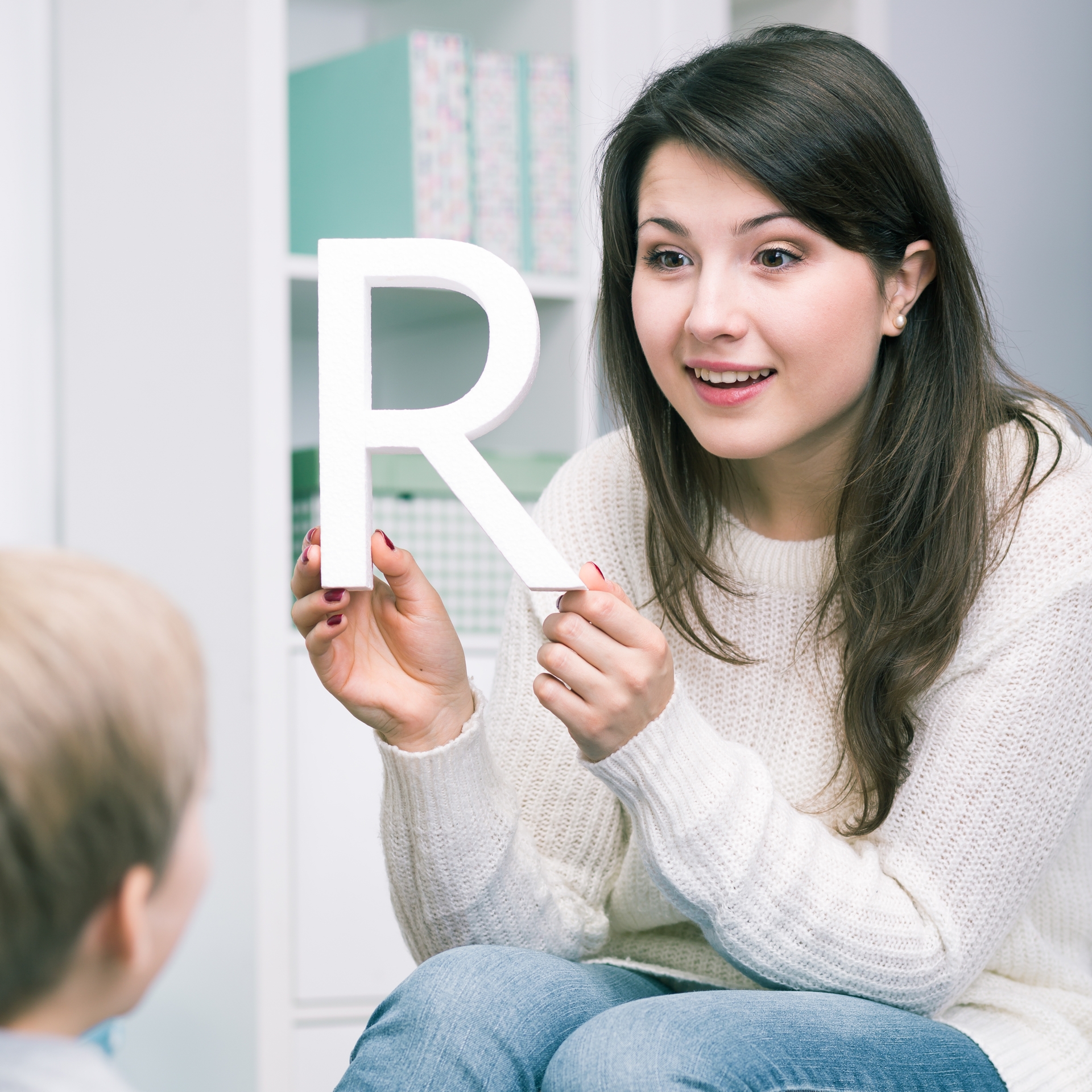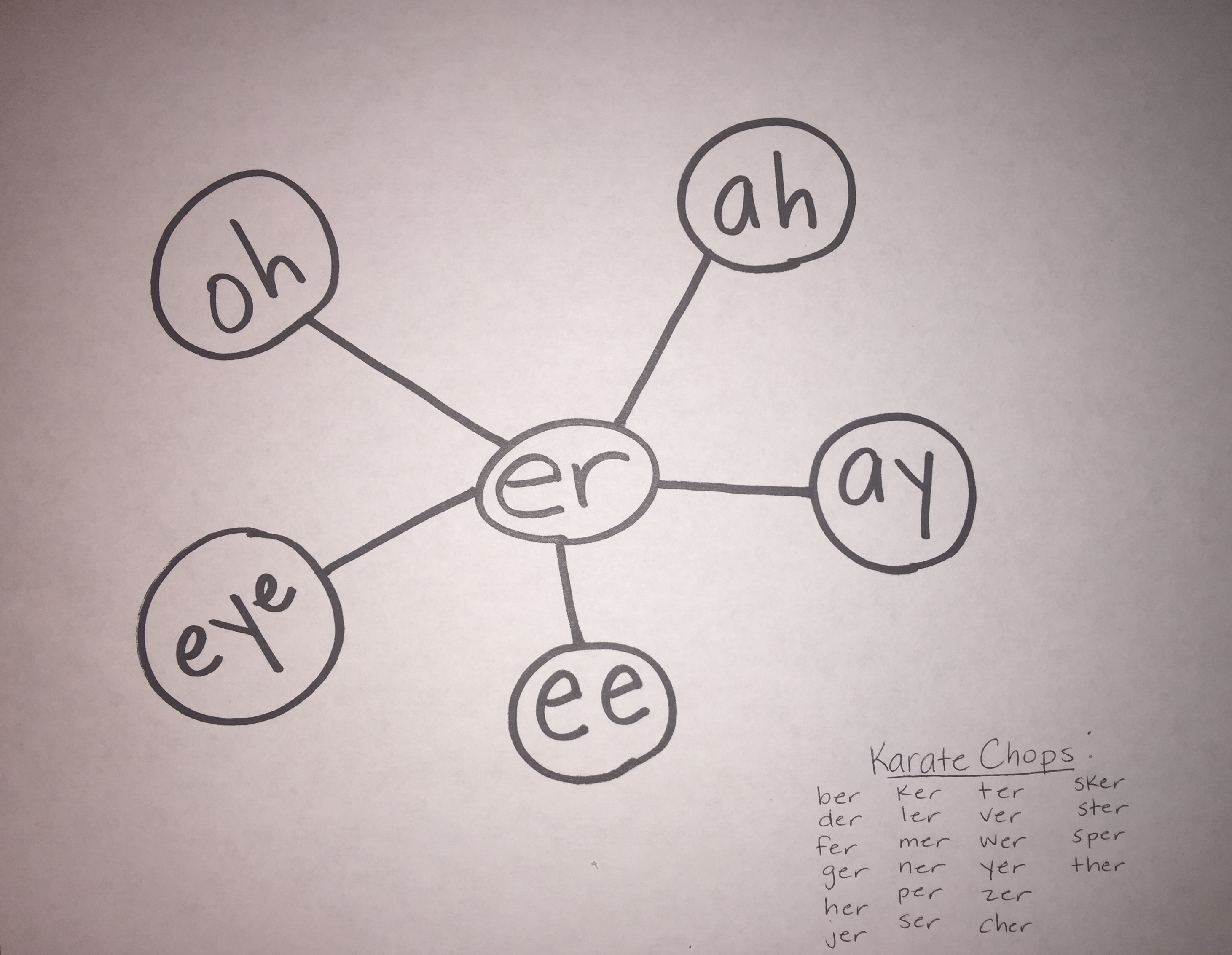
/R/ you ready for the next step?
November 8, 2016
In my last post, /R/ you kidding me?, I walked through the steps I take to establish the “r” sound in isolation with school-aged students. Once a student is able to quickly and smoothly produce 10 “er” sounds in isolation, I move on to CV and VC combos.
Bubble R’s: We start with a bubble map with “r” in the center. I fill the outer bubbles with the vowels encountered in vocalic r’s: /eɪ/, /i/, /aɪ/, /oʊ/, and /a/. I typically write these in kid friendly ways, either as the vowel or how it is pronounced (eye, ee, oh, etc). Let the students choose what makes the most sense for them since the tool is personal to them. The pace at first is slow, working on making the vowel and then the “er” sound: air, ear, ire, or, and ar. I don’t stress about the the pace or if there is a pause in between the sounds, as long as both sounds are clear and correct. We eventually work on building up speed to blend the sounds together for a true vocalic “r”.
Regular R’s: Next we work the bubble map the other way, starting with the “r” in the middle and working outward toward the vowels. This will be a precursor to words that have prevocalic “r” sounds like fruit, rabbit, pirate. Here we focus on getting the articulators set up for the “er” sound, but moving quickly into the vowel and stretching out that vowel sound.
Karate Chop R’s: Last we work on those vocalic “er”s that follow a consonant sound, such as ber, cher, ker, and ter (in words like October, and teacher). Because they are fast I make a karate chop motion with my hand as we move through the list.

Once students can produce these combinations, we move on to words, phrases, sentences, reading, and conversation levels, similar to any other sound. I associate the given verbal cues with the different r’s because it helps students distinguish sounds and repair errors as we encounter words in higher levels of difficulty. For example, if a student is reading the sentence: “Her hair is really messy in the morning.” I can read the sentence first and then cue the student before s/he attempts to say it (e.g. Her is a karate chop r, hair is a bubble r with ay and er, really is a regular r, and morning is a bubble r with oh and er).
Or if a student struggles with a word like “hear,” pronouncing it like “he-uh”, I can provide specific feedback using the completed bubble map. I will point to the ee-er combination, say “I heard your ee but not your er” and have them attempt again, slowing down if needed to ensure both sounds are produced correctly.
If a student is having particular difficulty with a sound combo, even at a higher level of difficulty, we use the bubble map as a quick warm up to strategically get in several productions of the difficult combination. For example, if the student struggles saying “fire,” we go back to map and do several productions of eye-er, then work it back into the word.
In my experience, once you have established this sound in isolation, it is a fairly quick process to move through the articulation hierarchy and have a student graduate from speech. I have typically used this with a more traditional pull out model, 1-2 times a week in the speech room; however, this method can also work within a 5-minute artic model or when working in a classroom. You will also need to use your professional judgment to monitor and adjust services based on the individual needs of the student (e.g. Does the student need more frequency throughout the week? Is attention a factor if working in the classroom? Is group size a factor?).
Also, the process is even quicker if you can involve the parent and/or teacher(s) in the process to help practice in settings outside of the speech room. For teachers, I speak to them about the verbal cues the student has learned, and we also discuss ways to incorporate visual cues in the classroom such as (1) using a different color highlighter for the different types of r’s to mark overlays on text when reading aloud or to highlight the sound in spelling lists; or (2) using a hand signal (e.g. the teacher tapping herself on the shoulder when the student is looking at her) before the student is expected to respond verbally in class to cue the student to be conscious of his/her articulation strategies. For parents, I stress the importance of not pressuring the student to speak perfectly at all times, but to rather set some strategic times to “listen for” and “practice” a sound. For example, the family can determine that every night during dinner, they will listen for the student’s sound and help correct when needed. Once that is going well, then another setting/time can be added, such as every time the family is driving in the car, or every time the student is talking on the phone, so that each week the opportunities for practice are being incorporated more and more frequently throughout the family’s normal routine.
“R” used to be a goal I hated to see or write on an IEP, but now that I have a concrete approach to tackling it, and know I can move students quickly off my caseload, I no longer dread it!
-Lisa



